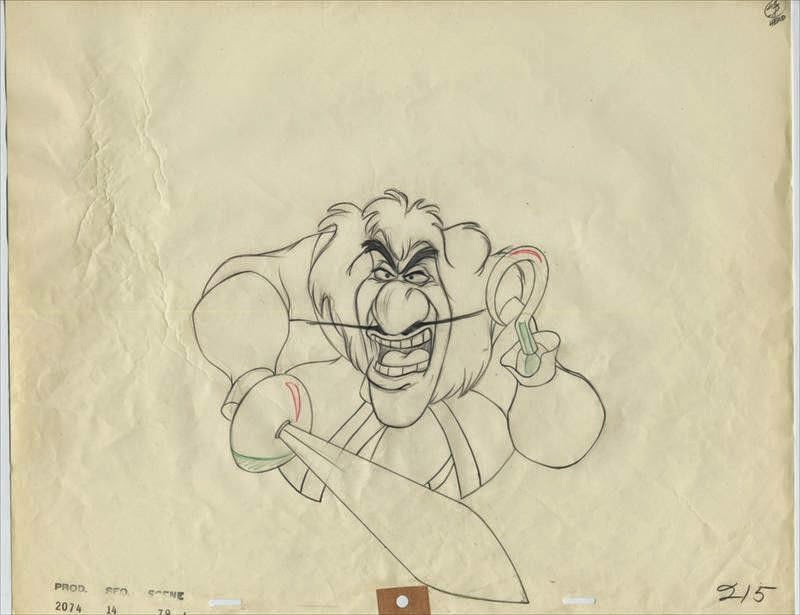Original production drawing of Captain Hook from "Peter Pan," 1953; Size - Captain Hook 8 x 8", Sheet 15 1/2 x 12 1/2"; Three peg hole paper stamped PROD 2074 - SEQ 14 - SCENE 79 lower left and numbered in pencil 215 lower right.
To purchase this drawing or to visit the Art Gallery, CLICK HERE
Captain Hook was animated by legendary Frank Thomas and voiced by Hans Conried. Conried was also the voice of George Darling, which is consistent with the roles of "Peter Pan" for the stage. I remember seeing Conried acting on "I Love Lucy" where he played an English tutor as well as playing the character Wrongway Feldman on "Gilligan's Island." His voice was so distinctive and so memorable that he was perfect for the role of Captain Hook; as he had a wonderful way of conveying both the rough gruff pirate role as well and the sly calculating villain.
This is a fantastic production drawing from the final battle between Captain Hook and Peter Pan aboard the pirate's ship, Jolly Roger. Captain Hook, armed with is sword and his raised hook pursues Peter Pan into the rigging of the ship, daring Peter to face him. As he climbs up the rope ladder he says, "Ha ha ha, you wouldn’t dare fight old Hook man to man. You’d fly away like a cowardly sparrow."
Frank Thomas's first sketches of Captain Hook were much more menacing than the final product. Walt Disney felt the character was going to be too frightening for children and so Thomas toned down his drawings. The result is a wonderful villain and I would say that he is my favorite male villain in the Disney film world.
This is a fantastic production drawing from the final battle between Captain Hook and Peter Pan aboard the pirate's ship, Jolly Roger. Captain Hook, armed with is sword and his raised hook pursues Peter Pan into the rigging of the ship, daring Peter to face him. As he climbs up the rope ladder he says, "Ha ha ha, you wouldn’t dare fight old Hook man to man. You’d fly away like a cowardly sparrow."
Close up of Captain Hook drawing.



























